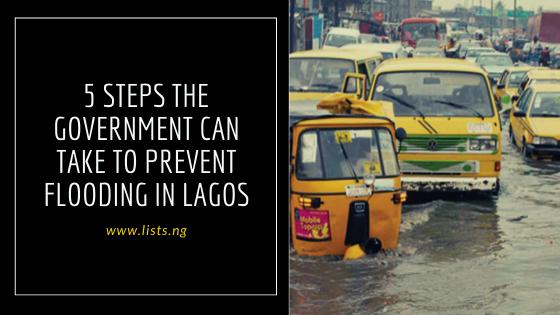Lagos is prone to flooding, and it is not difficult to understand why. Global warming has led to rising sea levels which makes the situation even worse. However, it is possible to limit the excessive flooding and mitigate its effects. Coastal cities such as Rotterdam, Dar es Salaam, Miami, among others are constantly putting measures in place to reduce flooding and the disaster that it creates, and Lagos should not be left out.
1. Better drainage
For a state surrounded by water, the drainage system in Lagos could be a hundred times better. Poor drainage system has been the number one cause of flooding in Lagos because there’s simply no other place for the water to go other than roads and into homes. Hence, for Lagos to reduce flooding there has to be better drainage systems.
2. Higher roads
Another way of preventing flood is by building elevated roads in the surrounding areas. This has become a trend across coastal cities with constant flooding. This will prevent the water from flowing into homes and destroying property.
3. Restrict buildings
This is very unlikely because of the growing population of people living in Lagos. More so real estate companies have made it a habit of selling sand filled lands in these flood prone areas at very cheap prices making it even more appealing. However in order to prevent the disastrous effects of flood, especially when it is inevitable, the government needs to prevent or reduce the construction of houses in these flood prone areas.
4. Better warning system
Every year the government sends out vague warnings of potential flooding without statistics and follow ups. More efforts such as sensitization, providing stats and facts, as well as follow up measures should be employed in a bid to sound the warnings louder.
5. Build Floodgates
Floodgates, also called stop gates, are adjustable gates used to control or stop water flow entirely especially in cases of flood. Floodgates sometimes are also used to lower the water levels in a main river or canal channels by allowing more water to flow into a flood bypass when the main river or canal is approaching a flood stage. This will go a long way in preventing excessive flooding.






